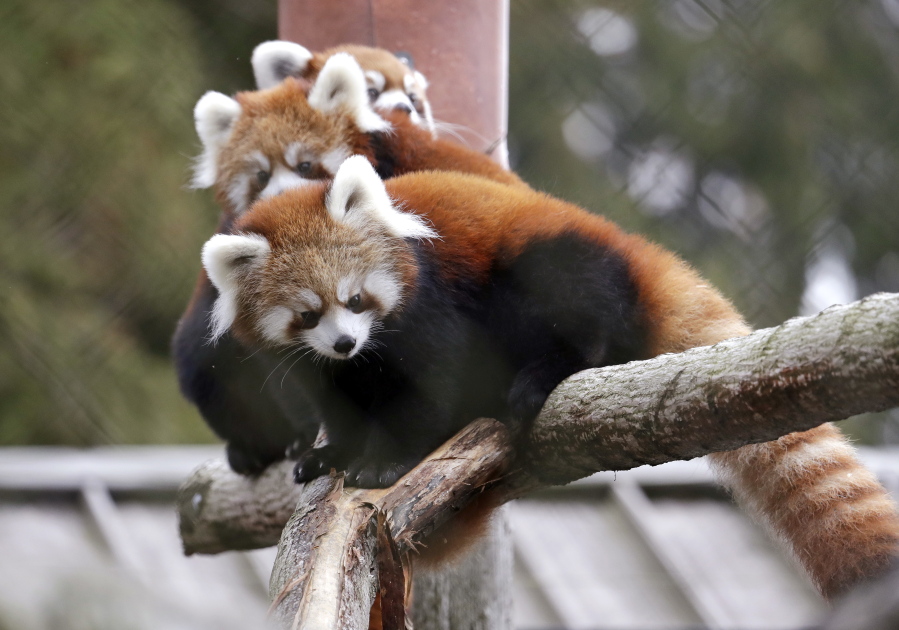Visitors to Seattle’s Woodland Park Zoo enjoyed a post-Thanksgiving treat Friday.
After months of anticipation, the zoo unveiled its red panda cub twins, Zeya and lla, to the eagerly awaiting public. On a damp morning, a crowd watched as the plush bundles of fur sat perched in a tree in their new enclosure. Their mother, Hazel, kept a close eye on her cubs from an adjacent branch.
The cubs, born on June 19, are the first successful red panda births at the zoo in 29 years. For the first five months of their lives, the cubs have been kept away from the public eye. It took 13 to 15 days for them to open their eyes. They began lives in their den box, and after a couple of months were given the chance to explore their outdoor area to get their footing.
“They’re very klutzy at first, they kind of roll and fall off things. But their mother is always there,” said Jamie Delk, an animal keeper at the zoo who keeps watch over the cubs.
Now the sisters are pro climbers — having already mastered every branch in their enclosure. And after getting used to having dozens of excited faces staring at them, they don’t seem fazed by the excited exclamations from the crowd.
“They were so excited to get out here and they were really excited about the pine cones and eating them — they weren’t really interested in us,” Delk said.
The successful breeding was helped by a conservation program that paired Hazel with a 13-year-old male red panda named Yukiko, who was transferred to the zoo in 2014 through the Red Panda Species Survival Plan conservation breeding program.
“Red panda breeding used to be very difficult, and as we’ve learned more about the species it’s been more successful,” Delk said. “They’ve learned more about their diet, what weight they need to be and what times of year they need to be put together.”
In the wild, fewer than 10,000 red pandas remain in their natural habitat of bamboo forests in China, according to the zoo. The endangered species shares a name with large pandas, but they are most closely related to raccoons, skunks and weasels.
“The species-survival program is a group of people that get together and look at all the genetics of all the red pandas in zoos and they’re like matchmakers.”
The zoo will try to breed the adult pair again in January, and mother Hazel will return to an enclosure to join Yukiko once again.
“I’ve been coming to the zoo periodically hoping to see them, but it was just lucky to see the babies today,” a visitor said. “I wasn’t expecting them to be out like this. It was a rare treat.”



